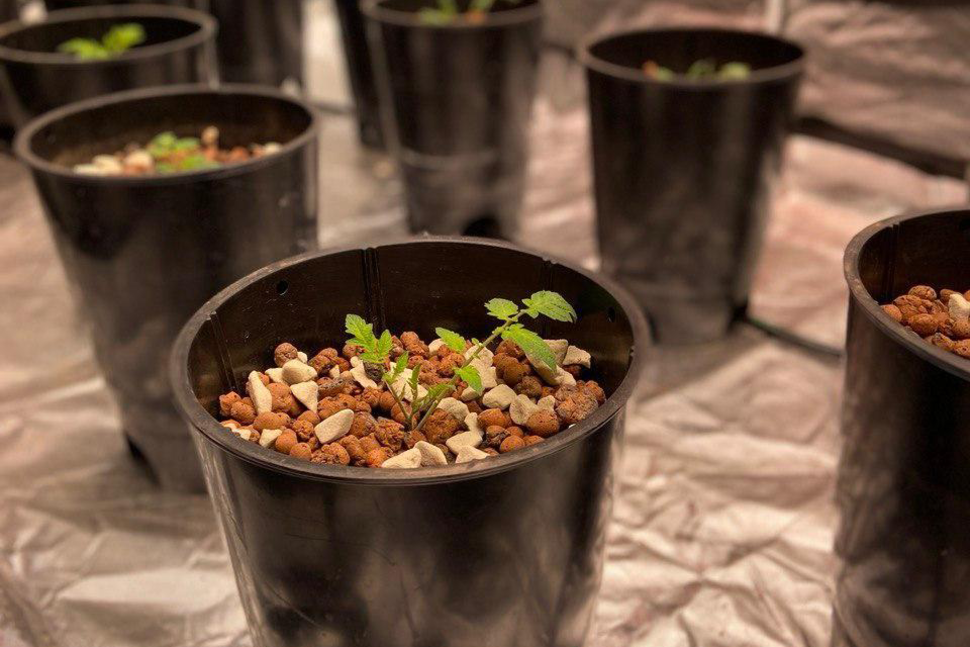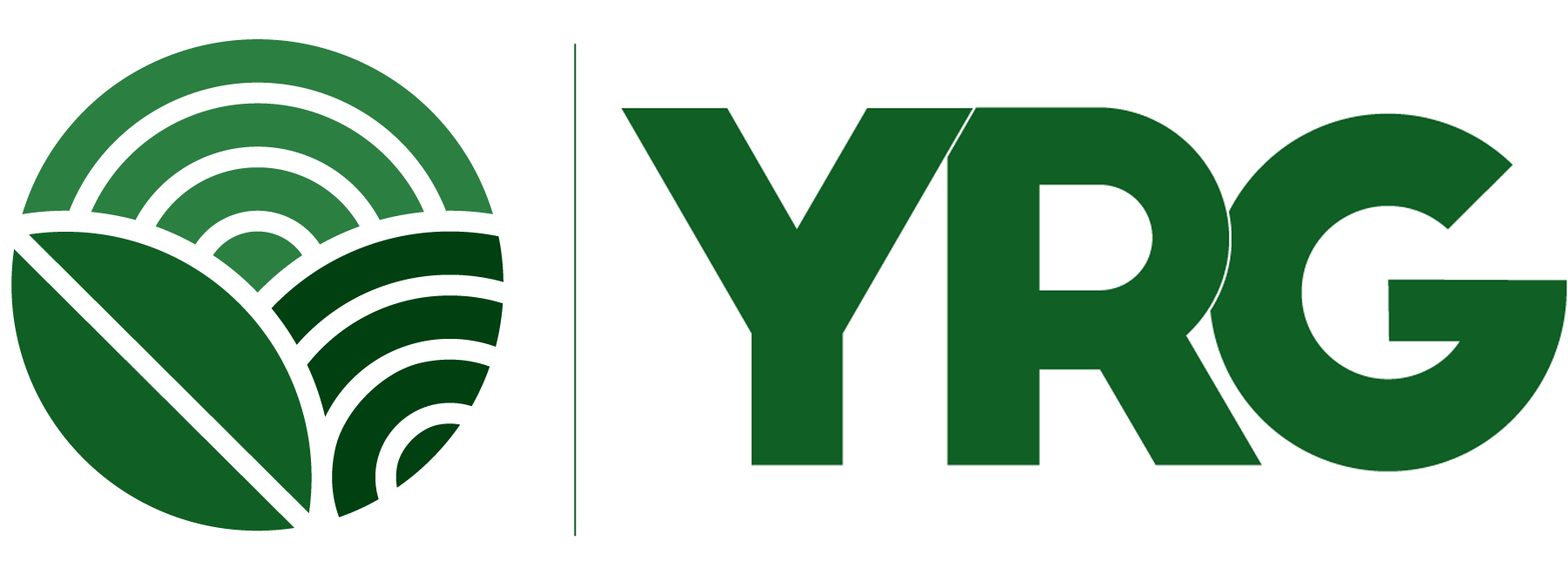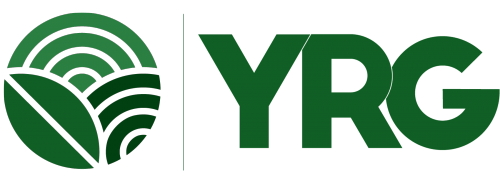Hydroponics is the term used to describe the ways in which plants can be raised without soil. These methods are also known as soil-less gardening and include growing crops in containers filled with water and any one of a number of non-soil mediums.
This article covers the basics of each of the following hydroponic grow systems:
- Ebb and flow - also known as fill and drain
- Deep water culture (DWC) and static solution culture
- Continuous-flow - also known Nutrient Film Technique (NFT)
- Passive sub-irrigation
- Aquaponics
- Aeroponics
- Fogponics
Let's dive right in!
Ebb and Flow (Fill and Drain)
In its simplest form, this technique can be accomplished by placing a tray above a reservoir of nutrient solution. The tray can be filled directly with a growing medium or filled with individual pots containing that medium. Plants are then placed either directly in the tray or in the pots.
The most common grow medium to use is clay pebbles or granules, also known as hydroton. These are affordable and reusable because
they can be easily sterilized between grows.
Coco coir is also an option and any size of
rockwool cubes or other neutral media would work just fine.
At regular intervals, a simple timer causes a pump to fill the upper tray with nutrient solution. Once the upper tray fills past a drain stop, it begins recirculating the water between the reservoir and the tray until a timer turns the pump off. The water in the upper tray then drains fully back into the reservoir and stops recirculating. This allows the medium to constantly cycle between water, nutrient solution and air.
The nutrient solution held within the reservoir will vary between types of plants and their stages of growth, but regardless of what you're growing, you want to monitor and maintain proper pH levels and ensure that your water temperature doesn't become too hot.
Throughout the span of a week, you might notice your reservoir needs additional water and/or nutrients. Rather than emptying and replacing the entire contents of the reservoir, you can conserve resources and money by simply topping it off. When doing this, though, be mindful that you maintain the proper proportions of nutrient solution to water and that pH levels stay within an appropriate range for your plant.
Here is the most common equipment that you'll need to get started growing using ebb and flow:
Deep Water Culture (DWC)
Deep Water Culture (also referred to as DWC) is the hydroponic method of plant production by means of suspending the plant roots in a solution of nutrient-rich, oxygenated water.
Because plant roots require oxygen just as much as they require water, the nutrient solution should be oxygenated. This can be accomplished using an
air pump combined with an
air stone. The air stone is submerged in the nutrient solution and connected to the air pump by
poly tubing. The air pump then provides a continuous flow of air to the stone inside your bucket.
Under ideal growing conditions, plants are able to grow a root mass that comprises the entire bin or bucket. As the plant grows and consumes nutrients, the pH and electrical conductivity (or EC) of the water will fluctuate. For this reason, frequently monitor your nutrient solution to ensure that it remains in the ideal uptake range for your particular plant.
Basic DWC methods using unconnected buckets require each bucket to be dosed with nutrients, topped off with water, tested for pH and EC individually which can become a time consuming task if you have more than a few plants. This leads us to Recirculating Deep Water Culture (RDWC) systems. Rather than having individual buckets, RDWC bins are linked together using poly tubing or PVC pipe. A control bucket is added to the system, containing a pump that pulls water from the last bucket and pushes it back into the first bucket. This return line generally has a filter on it that cleans particulates from the water before they reaches the pump. The control bucket is where you would dose your system with nutrients, and monitor your system's pH and EC. Just as with a single bucket system, your solution also needs to be oxygenated. This can be done either directly in each individual bin, or just in the control bin at the front of the system.
Last but not least, we have the Kratky method, which is a passive version of DWC. We refer to it as passive because it's a non-circulating technique. No additional inputs of water or nutrients are needed after the original application, and no electricity, pumps, water or oxygen circulation systems are required. You essentially setup a DWC bucket filled with nutrient solution, place your plant in a suspended net pot, and leave it alone for the entire life-cycle of the plant. The trick is to know your plant well enough that you provide the exact size of container, with exactly the right amount of water and nutrients so that no additional inputs are required until it's time to harvest.
Continuous Flow or Nutrient Film Technique (NFT)
Continuous flow systems, often called nutrient film technique, or NFT, are popular and versatile hydroponic systems. These are active systems, which means they require moving parts to work. They are similar to ebb and flow in that the systems use a pump to deliver fertilized water directly to the plant's roots and a drain pipe to recycle the unused nutrient solution. The difference is that, with NFT, the nutrient solution is continuously flowing through the roots rather than being completely filled and completely drained.
A grow tray or channel is placed at a downward angle with a drainpipe at the bottom that feeds into a reservoir. A submersible pump is placed in the reservoir with poly tubing connecting the pump to the high end of the grow tray or channel. Plants are suspended above the channel with their bare roots contacting a constant stream of water passing by as gravity pulls it from the top of the channel to the drainpipe at the bottom.
Nutrients can be mixed with water in the reservoir below the system, providing a constant shallow stream of nutrient-rich water cascading across your plant's roots. Just as with other hydroponic systems, you'll want to keep a close on eye on the pH and electrical conductivity, or EC which can be easily monitored within the reservoir.
A well designed NFT system utilizes the proper channel slope, flow rate, and channel length.
The recommended slope for an NFT system is one inch of drop (slope) for every 30 to 40 inches of horizontal length. The recommended flow rate is typically anywhere between 15 and 30 gallons per hour.
Here's what you need to build an NFT system:
NFT systems are most commonly used for growing plants that do not require a lot of support - lightweight, fast-growing plants that can be harvested quickly such as
lettuce, herbs and baby greens.
Aquaponics
Aquaponics is a combination of conventional aquaculture (raising aquatic animals such as fish in tanks) and hydroponics (cultivating plants in water). In aquaponics, water from the aquaculture system is fed to the hydroponic system. There, fish waste is broken down and converted into nitrates which are used as nutrition by the plants. The water is then recirculated back to the aquaculture system. In a basic aquaponic system, the only input necessary by the grower is the food used to feed the fish.
There are many styles of aquaponic systems that can work for different applications, from small indoor aquarium setups to medium backyard setups to larger commercial systems. Basically think of any hydroponic system, ebb and flow, nutrient film technique, deep water culture, passive sub-irrigation, you name it, and then replace the reservoir where you typically mix your nutrient-water solution with a fish tank.
Aquaponic system components may vary depending on complexity and size, but every system has theses key components:
The maturity and density of the fish in your system influences the concentration of nutrients in the water and how much of those nutrients are made available to the plant roots. Green, leafy vegetables with low to medium nutrient requirements, such as
cabbage,
lettuce,
basil,
spinach, and herbs do well in aquaponic systems.
Other plants, such as
tomatoes,
cucumbers, and
peppers, have higher nutrient requirements and will do much better in mature aquaponic systems with a higher density of fish. These plants may also require additional nutrients to be added by the grower.
Tilapia are the most popular fish for home and commercial projects where the intent is not only to raise plants, but to also produce edible fish. This is because Tilapia is a warmwater species that can tolerate crowding and changing water conditions. Freshwater crayfish and prawns are also viable options.
Aquaponics is a great way to combine both plants and animals in a single system, regardless of whether you're growing lettuce for a salad, Tilapia to filet, flowers just to enjoy or a goldfish as a pet.
Passive Sub-Irrigation
Passive sub-irrigation, also known as passive hydroponics, is a method where plants are grown in a medium without the use of additional equipment such as timers or pumps. This method relies on capillary action which is the ability of liquid to flow without the assistance of external forces like gravity. We also refer to this as wicking.
The grow medium you choose for this system is key, it must provide capillary action that will keep the plant uniformly moist, something that won’t decompose and provides adequate air space. Some of the most commonly used media are
clay pebbles,
coco coir,
perlite,
vermiculite,
rock wool or a combination of these. While not necessarily hydroponics, you can also use soil as your medium if you'd prefer in this type of setup.
Certain plants will do better than others in a passive system. Those that require the medium to become fully dry between waterings or that require a dry dormant period may fail to thrive under the constant moisture of a passive hydroponic system. This is because a passive system provides a constant supply of water and nutrients to the roots.
Components of a passive sub-irrigation or wicking system include:
- Bucket or container for the plant
- Reservoir
- A good wicking growing media like coco coir, perlite, or vermiculite
- Some strips of material like felt or good wicking rope
Typically, this system will have at least two or more good size wicks to supply enough water or nutrient solution to the plant.
To setup a basic system, select a container for your reservoir and fill it with water or nutrient solution. Then, select a container for your plant and make sure it has one or more holes cut into the bottom. Find a location where you can suspend your plant container above your reservoir. Ideally, you want the shortest distance possible. That way the water doesn't need to travel very far to reach the growing media. Attach your wick so that one end rests within the container where the grow media will be placed. The other end should hang far enough from the bottom that it can reach your reservoir. Moisten the wicks with water from your reservoir. Now, add your grow media of choice and moisten it as well. Place your plant in the media and you now have a basic passive sub-irrigation system.
Aeroponics and Fogponics
Aeroponics is an advanced form of hydroponic growing where plants are suspended so that their roots hang outside of a grow media, freely in the air. A nutrient-water mix is then sprayed or dripped along the roots to provide nutrition to the plants.
While there are a wide variety of aeroponic setups, almost all will require a few key components:
The "Tower Garden system" happens to be my personal favorite. A low-wattage, submersible pump in the reservoir pushes the nutrient-water solution to the top of the Tower through a small central pipe. The nutrient solution then drips down the inside of the Tower Garden, evenly cascading over the exposed plant roots.
A timer ensures this process repeats continuously, usually in 15-30 minute increments, delivering the ideal amount of oxygen, water and nutrients to plants in the ideal timeframe.
Other systems utilize spray nozzles or misters to deliver an even distribution of nutrient solution to your roots rather than using a gravity-assisted drip like the Tower Garden.
A twist on aeroponics is fogponics which is very similar, but rather than dripping or spraying the roots with nutrient solution, a fogger atomizes the mix, breaking down the droplets into a vapor. Plants absorb these vaporized particles at a much more efficient rate than normal.
Well designed aeroponic systems make it easy to work with your plants by providing adequate separation of the plants from each other. Because roots are not trapped within a grow medium, this also allows a grower to move or remove an entire plant from the system quickly without interrupting the other plants around it.
The one drawback to aeroponic and fogponic systems is that both rely on the consistent delivery of water and nutrients through the use of timers and electricity. During a power outage, plants can suffer quickly if their bare roots go without moisture for too long. To avoid this type of catastrophe, a secondary power supply is recommended (such as battery backup and/or generator.)





